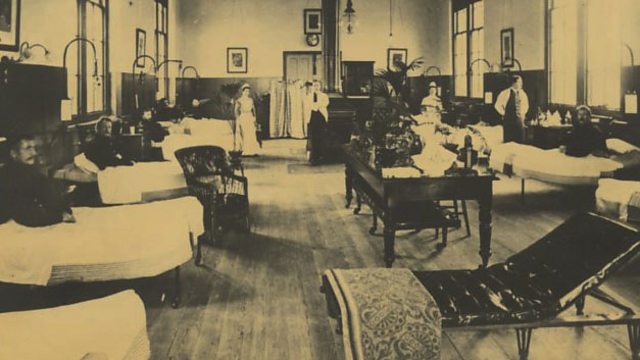Liverpool School of Tropical Medicine
Pioneering work carried out during WW1 was vital in controlling and reducing malaria
The Liverpool School of Tropical Medicine was founded in 1898 when lack of sanitation in shipping brought outbreaks of disease to the port city.
The initial funding was Β£350 which came from shipping magnate Sir Alfred Jones, whose crews on the Elder Dempster Line often brought back tropical infections from west and southern Africa.
By 1914, the school’s first lecturer Ronald Ross had won the Nobel Prize for determining the link between mosquitoes and malaria, they had funded 32 expeditions and carried out pioneering research. T
he school was also finishing their first purpose built premises on Pembroke Place – a five floor building with a lecture theatre, laboratories, darkroom, animal houses and insectaries.
It would be 1920 when these facilities would be first used for their original purpose as World War One saw the building used as a military hospital.
In 1915, 200 beds were provided for patients suffering from disorders and diseases such as tropical dysentery and malaria. In 1916, 3,436 cases were treated, 2,000 of which were malaria, and over 100 samples were examined every day for parasites by diagnostic staff.
The school also offered short courses for the Royal Army Medical Corps as they prepared to treat soldiers on the front line.
This relationship with the Ministry of Defence has continued, with training being given to medics facing tropical diseases.
The pioneering work carried out during and in the years following World War One was vital in the international effort controlling and reducing malaria.
Location: Liverpool School of Tropical Medicine, Liverpool L3 5JY
Image: Southern Ward, courtesy of Liverpool School of Tropical Medicine
Duration:
This clip is from
Featured in...
![]()
Βι¶ΉΤΌΕΔ Radio Merseyside—World War One At Βι¶ΉΤΌΕΔ
Places in Merseyside that tell a story of World War One
More clips from World War One At Βι¶ΉΤΌΕΔ
-
![]()
The loss of HMY Iolaire
Duration: 18:52
-
![]()
Scotland, Slamannan and the Argylls
Duration: 07:55
-
![]()
Scotland Museum of Edinburgh mourning dress
Duration: 06:17
-
![]()
Scotland Montrose 'GI Brides'
Duration: 06:41







